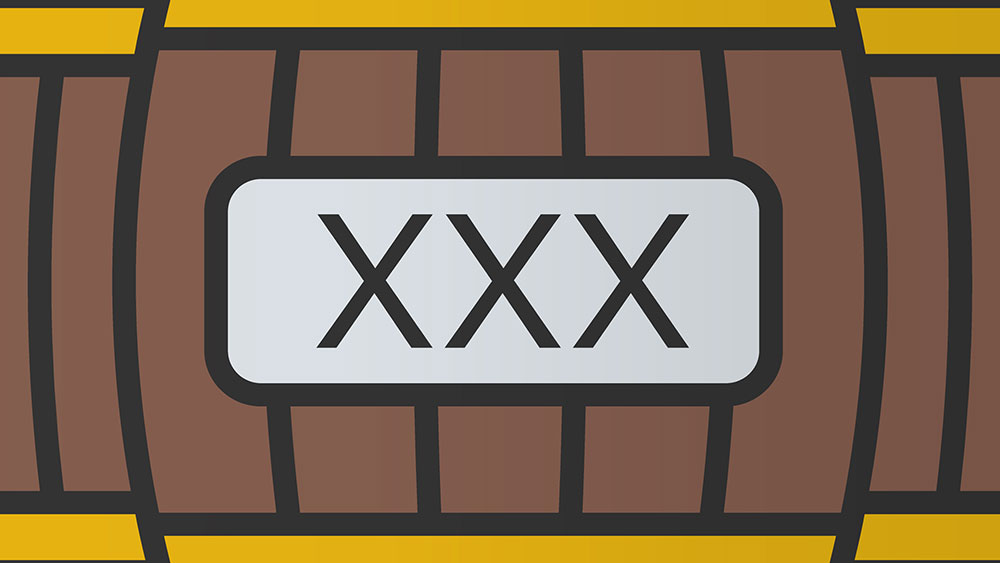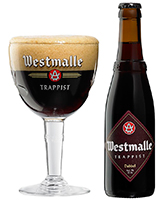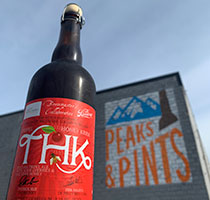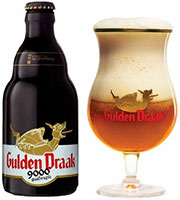 Peaks and Pints de Belgian Beerloo: XXX
Peaks and Pints de Belgian Beerloo: XXX
Few brewing nations hold a special place in brewers’ and drinker’s hearts quite like Belgium. From sour Flemish ales to high-octane Trappist brews, Belgium has an ancient and varied brewing history. Every Mid-July, Peaks and Pints craft beer bar, bottle shop and restaurant brings Belgium to Tacoma’s Proctor District when we celebrate our version of Belgian Beer Week — Peaks and Pints de Belgian Beerloo — this year July 16-20. Tuesday, July 16, we kick off the celebration with Peaks and Pints de Belgian Beerloo: XXX, highlighting dubiously-named dubbel, tripel, and quadruple, with an example of each on tap beginning at 11 a.m.
At some point, everyone has wondered why the three Belgian beers have been named in relation to each other. Is there math involved? If so, what factor is being multiplied? Speculation runs high, and Peaks and Pints has heard claims of all kinds from across our bar. “Yo, the styles have twice, three times, and four times the alcohol content of the monks’ basic brew.” “Silly, it’s the malt that’s doubled, tripled, and quadrupled in the recipes.” “It has nothing to do with ingredients. Most people couldn’t read back then, so the barrels of types of beer were marked with one, two, or three X’s.” “It’s how many times the beer has been fermented.”
Obviously, we enjoy the X’s explanation, thus the name of our first de Belgian Beerloo event.
Each account has a bit of truth to it, but none is entirely correct. The simplest (while still accurate) answer is that the names have to do with the amount of malt used. However, the full explanation has more to do with an old brewing process in which the same malt was used for multiple batches of beer than it does with simple math and the unique characteristics that each style has come to exhibit today.
Let’s take a look at the three Belgian beers of Peaks and Pints de Belgian Beerloo: XXX. …
THE DUBBEL
 Beer: Westmalle Trappist Dubbel
Beer: Westmalle Trappist Dubbel
Brewery: Brouwerij der Trappisten van Westmalle
History: In 1836, the Belgian Westmalle monastery became a Trappist Abbey and began brewing beer shortly thereafter. The holy suds they produced started out as an insider-only deal — a choice beverage to be made and enjoyed by Trappists and Trappists alone, but eventually they decided to expand and opened up a public beer hall in the early 1930s.
Characteristics today: The creamy head has the fragrance of special malt and leaves an attractive lace pattern in the glass. The flavor is rich and complex, herby and fruity with a fresh-bitter finish. It is a balanced quality beer with a soft feel in the mouth and a long, dry aftertaste.
Alcohol content: 7%
THE TRIPEL
 Beer: Tripel Honey Kriek
Beer: Tripel Honey Kriek
Brewery: De Proef Brouwerij collaboration with The Bruery out of Placentia, California
History: In 1996, highly regarded brewing engineer and professor Dirk Naudts created De Proef Brouwerij in the village of Lochristi, near the historic city of Gent, Belgium. The ultra-scientific brewery blends modern equipment and technologies with traditional brewing methods. Beers are produced on one of three brewing systems, matched to volume and desired flavor profile. It was only natural that when he finally put together his own brewery, it would be called De Proef – “the Prof” – Dirk’s fond nickname.
Characteristics today: This De Proef and The Bruery collaboration Belgian tripel is brewed with sour cherries and Yucutan honey that hits the nose with grainy malt, light stone fruit, cherry, apple and clove. Tastes more kriek than tripel with tart cherry and honey flavor with mild sweetness, lemon and mixed citrus.
Alcohol content: 9.3%
THE QUADRUPEL
 Beer: Gulden Draak 9000 Quadruple
Beer: Gulden Draak 9000 Quadruple
Brewery: Brouwerij Van Steenberge
History: Van Steenberge is a Belgian brewery in East Flemish Village of East Flanders, Belgium. The brewery started out in 1784 after it was founded by Jean Baptiste De Bruin. The brewery is considered to be a family brewery since its ownership and management has been passed on to several family generations after Jean Baptiste De Bruin’s death. Loyal to its Belgian roots, Van Steenberge produces Belgian style of beers using traditional and independent brewing methods to create beer such as Augustijn Blond, Piraat Ale, Bruegel and Gulden Draak.
Characteristics today: Gulden Draak 9000 pours a lovely chestnut brown, unusually light for a quadruple and is topped by the trademark towering, tan colored creamy head. It hits the nose with sweet malts, alcohol, caramel (almost burnt sugar) spicy yeast, floral notes (herbal and grassy) and crisp orchard fruits. On the tongue, expect a big caramel sweetness lead followed by biscuity, doughy malts coupled with dark fruits — though not as heavy as other quads, more berry like than dried fruits. A slight tartness from green apples and pears cut through along with just the right amount of clove spicing. Mild hops and a warming alcohol note finish things off perfectly.
Alcohol content: 10.7%
PEAKS AND PINTS DE BELGIAN BEERLOO: XXX, 11 a.m. to 10:45 p.m., Tuesday, July 16, Peaks and Pints, 3816 N. 26th St., Basecamp Proctor, Tacoma, no cover
LINK: Peaks and Pints de Belgian Beerloo: Cheese Pairing
